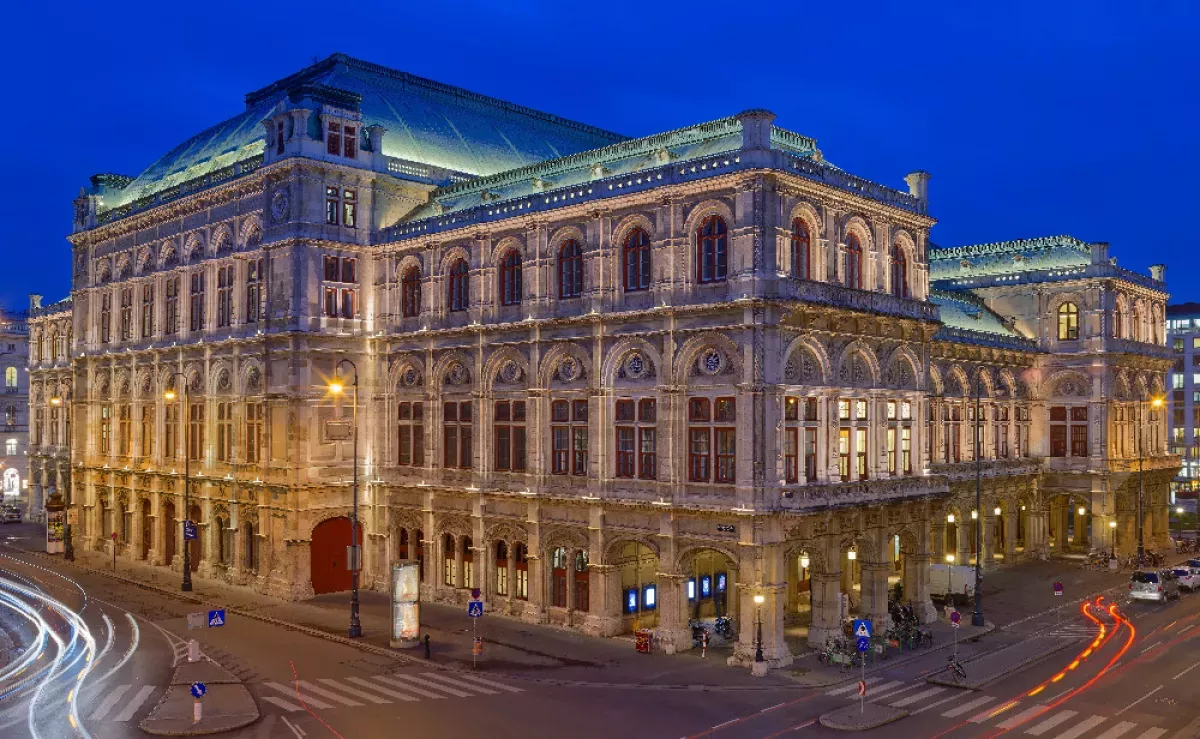Vienna, the capital and most populous city of Austria, boasts over two million residents, nearly a third of the nation's population. This primate city serves as Austria's cultural, economic, and political hub. Situated along the Danube River, Vienna holds the title of fifth largest city in the European Union and the most populous on the Danube.
1900: Creation of Brigittenau (District No. 20)
The year 1900 saw a significant change in Vienna's urban landscape with the creation of Brigittenau, established as the city's 20th district. This new district emerged from separating a part of the existing 2nd district.
1904: Incorporation of Floridsdorf and Other Villages
The year 1904 marked a significant expansion of Vienna's city limits with the integration of Floridsdorf, Kagran, Stadlau, Hirschstetten, Aspern, and other villages situated on the left bank of the Danube River. This incorporation led to the creation of the 21st district, expanding Vienna's presence across the river.
1907: Introduction of General Voting Rights for Men and Political Exclusion
In 1907, the Austro-Hungarian Empire introduced general voting rights for men for the parliament, known as the Reichsrat. However, Vienna's long-term mayor, Karl Lueger, belonging to the Christian Social Party, strategically maneuvered to avoid implementing this in Vienna's municipal elections. This effectively excluded a large portion of the working class from participating in local political decision-making. Adolf Hitler, who resided in Vienna during this period, saw Lueger's tactics as a model for manipulating antisemitism for political gain.
1907: Buses Introduced to Vienna's Public Transportation System
Vienna's public transportation network expanded in 1907 with the introduction of buses, marking a significant development in the city's urban mobility.
1908: Adolf Loos Designs the Kärntner Bar
In 1908, Adolf Loos designed the iconic Kärntner Bar, showcasing his distinctive modernist approach to interior design.
1909: Adolf Loos Completes the Looshaus
Architect Adolf Loos completed the construction of the Looshaus, a notable example of Viennese Modernism architecture, in 1909. The building's design reflects Loos's rejection of extraneous ornamentation, emphasizing functionality and clean lines.
1910: Vienna's Population Peak
By 1910, Vienna's population reached over two million, securing its position as the third-largest city in Europe. This surge in population was primarily driven by industrialization and migration from within the Austro-Hungarian Empire. Notably, Vienna boasted the world's second-largest Czech population at the time, after Prague.
1910: Integration of Strebersdorf into Vienna
Continuing its expansion, Vienna incorporated the village of Strebersdorf in 1910, further extending its boundaries and encompassing surrounding areas.
1910: Adolf Loos Completes the Steiner House
The Steiner House, another prominent example of Adolf Loos's architectural prowess, was finished in 1910. Like Loos's other works, the Steiner House embodies the principles of Viennese Modernism, prioritizing practicality and minimalist aesthetics.
1913: Viennese Coffee Houses Become Hubs for Intellectuals and Political Figures
By 1913, Viennese coffee houses had become central meeting places for intellectuals and political figures, with notable figures like Joseph Stalin, Adolf Hitler, Leon Trotsky, and Josip Broz Tito frequenting these establishments.
1913: Completion of the Imperial and Royal War Ministry
The Imperial and Royal War Ministry, a grand structure on Vienna's iconic Ringstraße, was completed in 1913. This building, symbolic of the Austro-Hungarian Empire's power, stands as a testament to the city's architectural prowess and historical significance.
1916: Vienna's Highest Recorded Population
Vienna reached its highest recorded population in 1916, a testament to the city's growth and significance during the early 20th century.
1918: End of Austria-Hungary and Population Decline
Following the end of Austria-Hungary in 1918, Vienna witnessed a significant decline in its population. Many Czech and Hungarian residents returned to their home countries, contributing to this demographic shift.
1918: Establishment of the First Republic
The First Republic of Austria was established in 1918, marking a new era for the country.
1918: End of Christian Social Party Dominance
The year 1918 marked the end of a significant political era in Vienna, as the Christian Social Party, which had held sway over city politics for two decades, lost its dominance. This shift in power paved the way for new political forces and ideologies to shape Vienna's future.
May 1919: Social Democrats Win Municipal Election
In May 1919, the Social Democrats won an absolute majority in the Vienna municipal election, securing 100 out of 165 seats in the city council. This victory ushered in the era of Red Vienna.
1919: Vienna as Capital of the First Republic of Austria
Following the short-lived Republic of German-Austria, Vienna became the capital of the First Republic of Austria in 1919.
1919: SPÖ Assumes Control in Vienna
The SPÖ won the first free election in Vienna in 1919, marking the beginning of their long-standing control over the city's government.
1920: Vienna Becomes a Federal State
In 1920, Vienna gained the status of a federal state, leading to the establishment of a state parliament and the dual role of the mayor as Landeshauptmann.
1920: Separation of Municipal and State Business
The 1920 city constitution mandated the separation of municipal and state business, resulting in separate meetings for the city council and state parliament, despite having identical memberships.
1931: Ernst-Happel-Stadion Opens in Prater Park
The Ernst-Happel-Stadion, originally called the Praterstadion, opened its doors in 1931 within Vienna's Prater Park, becoming a significant landmark for sports in the city.
1933: Closure of the Nationalrat
In 1933, Engelbert Dollfuss closed down the first chamber of the federal parliament, the Nationalrat.
February 1934: Austrian Civil War and the Ban of the Social Democratic Party
In February 1934, the Austrian Civil War took place, involving troops of the Austrian federal government under Engelbert Dollfuss and paramilitary socialist organizations. This led to the ban of the Social Democratic party.
1934: Austrian Civil War
In 1934, during the Austrian Civil War, Chancellor Engelbert Dollfuss ordered the Austrian Armed Forces to suppress socialist resistance, leading to the shelling of civilian housing occupied by the Republikanischer Schutzbund.
1934: Interruption of SPÖ Dominance
The SPÖ's dominance in Vienna was interrupted between 1934 and 1945 when the party was outlawed.
1934: End of Red Vienna
The period of socialist politics and social reform in Vienna, known as Red Vienna, came to an end in 1934.
October 1938: Creation of "Great Vienna" under Nazi Rule
In October 1938, during the Nazi regime, Vienna underwent a major territorial expansion, creating "Great Vienna." This expansion involved incorporating 97 towns and villages into the city, redrawing its boundaries and significantly increasing its size. However, this expansion proved temporary, as 80 of these incorporated areas were returned to Lower Austria in 1954.
November 1938: November Pogroms in Vienna
During the November pogroms in November 1938, Nazi violence targeted Jewish communities in Vienna, resulting in the destruction of 92 synagogues, with only the city temple in the 1st district spared.
1938: Soviet Control During Occupation
During the four-power occupation of Vienna, the Soviet forces exerted control over specific districts, including those incorporated into the city in 1938.
1938: End of an Era for Viennese Culture
The year 1938 marked a turning point as Vienna's flourishing cultural scene, particularly in music, faced oppression and persecution with the rise of Nazi Germany.
April 1945: Vienna Offensive and Soviet Occupation
On April 2, 1945, the Soviet Red Army launched the Vienna Offensive, capturing the city after eleven days of fighting and marking the beginning of Soviet occupation.
September 1945: Four-Power Occupation of Vienna
Following the end of World War II, Vienna was divided into four sectors under the control of the US, UK, France, and the Soviet Union, beginning in September 1945.
1945: Reinstatement of SPÖ Control
After a period of illegality, the SPÖ regained control of Vienna's government in 1945.
1948: Concerns Over Potential Berlin Blockade Repeat
The Berlin Blockade of 1948 raised concerns among Western powers that the Soviets might impose a similar blockade on Vienna, leading to contingency plans.
1948: Cold War Dynamics in Vienna
The Cold War significantly impacted Vienna, with the city becoming a center of espionage between the Western and Eastern blocs after the 1948 Berlin Blockade.
1949: SOS Children's Villages Founded in Vienna
Hermann Gmeiner founded SOS Children's Villages in Vienna in 1949, establishing a global organization dedicated to providing care and support for orphaned and abandoned children.
1949: The Third Man Film Release
Set against the backdrop of post-war Vienna in 1949, Graham Greene's screenplay for the film "The Third Man" captures the city's atmosphere during the four-power occupation. Notably, the film's score, composed and performed by Anton Karas using a zither, became iconic.
1949: Release of "The Third Man"
The Third Man, a classic film noir masterpiece set against the backdrop of postwar Vienna, was released in 1949. The Burg Kino, a renowned cinema in Vienna, is known for its tradition of screening this cinematic gem three times a week.
1953: Barbed Wire in Berlin, Not Vienna
In contrast to the erection of barbed wire fences around West Berlin in 1953, Vienna did not experience the same physical division, reflecting differing Cold War dynamics.
1954: Reversal of Nazi-Era Expansion
The year 1954 witnessed a significant reversal of the territorial changes imposed during Nazi rule. Eighty towns and villages that were forcefully incorporated into Vienna in 1938 were returned to Lower Austria, marking a return to a more historically accurate boundary and reducing the city's size.
May 1955: End of Four-Power Control and Cultural Revival
May 1955 marked the end of the four-power control over Vienna with the signing of the Austrian State Treaty. This significant event led to the reopening of prominent cultural institutions like the State Opera and the Burgtheater after years of post-war reconstruction.
October 1955: Austria's Neutrality Law
In October 1955, Austria passed a law declaring its neutrality, ensuring it would not align with NATO or the Soviet bloc. This decision, influenced by the Soviet Union's guarantee in exchange for their signature on the State Treaty, had lasting implications, including Austria's delayed entry into the European Union in 1995.
1955: Austria Regains Full Sovereignty
After a decade of Soviet occupation, Austria regained full sovereignty in 1955, marking the end of the Allied occupation that began in 1945.
1955: Austrian State Treaty and Neutrality
The signing of the Austrian State Treaty in 1955 marked the end of the Soviet occupation in Eastern Austria and Vienna, with Austria declaring permanent neutrality in exchange.
1963: Vienna's English Theatre Founded
The Vienna's English Theatre (VET) was established in 1963, marking a significant cultural milestone as the first English-language theater in continental Europe. Situated in Vienna's 8th district, the VET has since become a beloved institution, offering a diverse range of English-language productions to audiences from Vienna and beyond.
1963: Ernst-Happel-Stadion Hosts First European Cup Final
Vienna's Ernst-Happel-Stadion took center stage in the world of football in 1963 when it hosted its first European Cup final, marking the beginning of its legacy as a venue for major sporting events.
1969: Vienna Convention on the Law of Treaties Signed
In a landmark event for international law, the Vienna Convention on the Law of Treaties was signed in Vienna in 1969, establishing a comprehensive framework for treaty relations between states.
1972: Construction Begins on Donauinsel, Vienna's Artificial Island
The year 1972 marked the start of an ambitious project in Vienna - the construction of Donauinsel, a 21.1 km long artificial island serving as both flood defense and a hub for leisure activities.
1974: Vienna Open Tennis Tournament Inaugurated
The city of Vienna welcomed the inaugural edition of the Vienna Open tennis tournament in 1974, held at the Wiener Stadthalle, marking the beginning of an annual sporting tradition.
1977: Billy Joel Releases "Vienna"
Billy Joel's iconic song "Vienna" captivated audiences upon its release in 1977.
1981: Ultravox Releases "Vienna"
Ultravox, a British new wave band, released their influential synth-pop ballad "Vienna" in 1981.
1983: Construction of Buddhist Peace Pagoda
The year 1983 witnessed the construction of a Buddhist Peace Pagoda on the banks of the Danube in Vienna. This serene landmark was built by the dedicated monks and nuns of Nipponzan Myohoji, serving as a symbol of peace and a testament to the city's growing religious diversity.
1986: Ernst-Happel-Stadion Hosts Second European Cup Final
The Ernst-Happel-Stadion further solidified its reputation as a premier football venue by hosting its second European Cup final in 1986.
1988: Construction of Donauinsel Completed
After 16 years of work, the construction of Donauinsel, Vienna's artificial island, reached completion in 1988, transforming the city's landscape and providing a unique space for recreation.
1989: Ernst-Happel-Stadion Hosts Third European Cup Final
In 1989, Vienna's Ernst-Happel-Stadion once again hosted the prestigious European Cup final, solidifying its place in football history.
1989: Vienna: Gateway to Eastern Europe
The fall of the Iron Curtain in 1989 led to Vienna becoming a gateway to Eastern Europe, with 300 international companies setting up their Eastern European headquarters in the city.
1990: Treaty on Conventional Armed Forces in Europe Signed in Vienna
Vienna played a pivotal role in international arms control with the signing of the Treaty on Conventional Armed Forces in Europe in 1990, aiming to reduce tensions and prevent military conflict in Europe.
1991: A German Requiem Publication
Philip Kerr's 1991 novel, "A German Requiem," offers a depiction of occupied Vienna, further solidifying the city's historical significance in literature.
1991: FPÖ Gains Seats in City Council
The Freedom Party of Austria (FPÖ) increased its representation in the city council from the 1991 elections, winning 21 seats.
1993: Cycling Usage at 3% in Vienna
In 1993, cycling accounted for a modest 3% of transportation usage in Vienna.
1994: Ernst-Happel-Stadion Hosts Fourth European Cup Final
The Ernst-Happel-Stadion in Vienna hosted its fourth European Cup final in 1994, further cementing its reputation as a top venue for the sport.
1995: Austria Joins the European Union
In 1995, Austria joined the European Union, marking a significant development in its history. This move was influenced by various factors, including the country's long-held neutrality since 1955.
1996: SPÖ Loses Overall Majority
For the first time since 1919, the SPÖ lost its absolute majority in the 1996 city council elections, securing 43 seats and 39.15% of the vote.
1998: Vienna Establishes Anti-Discrimination Unit
In 1998, Vienna took a significant step towards combating homophobic discrimination by establishing an anti-discrimination unit within its city administration.
2000: Renewed Population Growth in Vienna
After decades of stagnation and decline, Vienna's population experienced notable growth in the 2000 census, marking a turning point in the city's demographic trends.
2000: Haus der Musik Opens
The Haus der Musik, which translates to "house of music," first opened its doors to the public in the year 2000.
2001: Vienna's Diverse Demographics
By 2001, statistics revealed that 16% of Austria's residents were of non-Austrian nationalities. Within Vienna, nearly half of this demographic were from former Yugoslavia. Other prominent nationalities included Turks (2.5%), Poles (0.9%), and Germans (0.8%).
2001: SPÖ Regains Overall Majority
The SPÖ regained its overall majority in the 2001 city council elections, winning 52 seats and 46.91% of the vote.
2001: Revitalization of the Gasometer
The year 2001 witnessed the completion of a remarkable architectural project in Vienna: the remodeling and revitalization of the historic Gasometer. This ambitious undertaking seamlessly blended modern architectural elements with the existing structure, breathing new life into the industrial landmark.
2001: UNESCO World Heritage Site Designation
Vienna's city center was recognized for its historical and cultural significance and was designated a UNESCO World Heritage Site in 2001.
2002: LISAvienna Platform Launched
In 2002, the LISAvienna platform was launched to support the life sciences sector in Vienna.
2004: Surge in New Companies in Vienna
Since 2004, Vienna has seen a significant increase in new company formations, with around 8,300 new businesses established annually.
2004: Raiffeisen Vikings Vienna Begin Eurobowl Domination
The Raiffeisen Vikings Vienna, an American football team based in the city, embarked on a period of dominance in the Eurobowl competition, winning the title for four consecutive years starting in 2004.
October 2005: SPÖ Increases Majority
The SPÖ further solidified its majority in the city council elections in October 2005, winning 55 seats and 49.09% of the vote.
2005: Vienna Ties for First as World's Most Livable City
A 2005 study by the Economist Intelligence Unit placed Vienna in a tie for first place with Vancouver and San Francisco as the most livable cities globally.
2005: Vienna: World's Leading Destination for International Congresses and Conventions
Between 2005 and 2010, Vienna established itself as the world's premier destination for international congresses and conventions, solidifying its position as a global hub for business and knowledge exchange.
2005: Start of Significant Population Growth
From 2005 onward, Vienna's population began to experience a significant period of growth.
2005: Theater an der Wien Transitions Back to Opera
Up until 2005, the Theater an der Wien was renowned for hosting premieres of musicals. However, in 2006, a year dedicated to commemorating the 250th anniversary of Mozart's birth, the theater made a significant shift back to its operatic roots.
2006: Theater an der Wien Transitions Back to Opera
Up until 2005, the Theater an der Wien was renowned for hosting premieres of musicals. However, in 2006, a year dedicated to commemorating the 250th anniversary of Mozart's birth, the theater made a significant shift back to its operatic roots.
June 2007: Construction of Vienna Central Station Begins
After commencing construction in June 2007, the new Vienna Central Station (Hauptbahnhof) officially opened its doors in October 2014, marking a major milestone in the city's transportation infrastructure. The station was designed to accommodate a high volume of passengers, with 1,100 trains and 145,000 passengers expected to pass through daily.
2007: Raiffeisen Vikings Vienna Secure Fourth Consecutive Eurobowl Title
In 2007, the Raiffeisen Vikings Vienna cemented their place as a European American football powerhouse by securing their fourth consecutive Eurobowl title.
2007: Vienna Achieves Top Ranking for Innovation Culture
Vienna secured the top spot globally for its vibrant culture of innovation in both 2007 and 2008, demonstrating its commitment to fostering creativity and technological advancement.
2008: Protests Erupt Against the Wiener Akademikerball
Starting in 2008, the Wiener Akademikerball, an annual ball held at the Hofburg Palace, became a focal point of controversy, sparking yearly protests from various organizations. The ball, hosted by Austria's right-wing populist party, the FPÖ, drew criticism for attracting far-right politicians and groups.
2008: Vienna Achieves Top Ranking for Innovation Culture
Vienna secured the top spot globally for its vibrant culture of innovation in both 2007 and 2008, demonstrating its commitment to fostering creativity and technological advancement.
2010: SPÖ Forms Coalition with Green Party
After losing their overall majority in 2010, the SPÖ formed a coalition with the Green Party—a first in Austria.
2010: Vienna: World's Leading Destination for International Congresses and Conventions
Between 2005 and 2010, Vienna established itself as the world's premier destination for international congresses and conventions, solidifying its position as a global hub for business and knowledge exchange.
2010: Vienna Ranked Eighth on Monocle's Quality of Life Survey
Monocle's 2012 "Quality of Life Survey" positioned Vienna in fourth place on its list of the top 25 cities worldwide "to make a base within." This marked an improvement from its sixth-place ranking in 2011 and eighth-place ranking in 2010.
2010: Basis for Population Growth Projection
The year 2010 serves as the base year for UN-Habitat's projection of Vienna's population growth, which predicts a 4.65% increase by 2025.
March 2011: Vienna Announces Smart City Wien Initiative
In March 2011, the mayor of Vienna unveiled the ambitious Smart City Wien initiative, following the Austrian Climate and Energy Fund's decision to provide funding for a project with the same objective. The Vienna city administration actively engaged with a wide array of stakeholders and subsequently released the comprehensive Smart City Wien action plan.
2011: Vienna's Broadband Connectivity at 74.3%
In 2011, a significant 74.3% of Viennese households had access to broadband internet, while 79% possessed a computer.
2011: Vienna Ranked Second Most Livable City
Vienna achieved a ranking of second place, behind Melbourne, in the Economist Intelligence Unit's livability rankings from 2011 to 2015.
2012: Vienna's Growing IT Sector
By 2012, Vienna's information and communication technology sector had grown significantly, with 8,962 IT businesses employing 64,223 people.
2012: Theater an der Wien Takes Over Wiener Kammeroper
In 2012, Theater an der Wien expanded its operations by taking over the Wiener Kammeroper, a historic intimate theater located in Vienna's first district, with a seating capacity of 300.
2012: Migrant Background in Vienna
In 2012, an official report from Statistics Austria highlighted the significant migrant population in Vienna. The report indicated that over 660,000 residents (38.8%) had full or partial migrant backgrounds, with a majority originating from former Yugoslavia, Turkey, Germany, Poland, Romania, and Hungary.
2012: UN-Habitat Recognizes Vienna as Most Prosperous City
In 2012-2013, the UN-Habitat designated Vienna as the world's most prosperous city, highlighting its exceptional quality of life and economic well-being.
2012: Vienna Named Most Prosperous City by UN-Habitat
In its influential "State of the World Cities 2012/2013" report, the United Nations Human Settlements Programme (UN-Habitat) bestowed upon Vienna the title of the most prosperous city worldwide.
2012: Vienna Ranks Fourth on Monocle's Quality of Life Survey
Monocle's 2012 "Quality of Life Survey" positioned Vienna in fourth place on its list of the top 25 cities worldwide "to make a base within." This marked an improvement from its sixth-place ranking in 2011 and eighth-place ranking in 2010.
2012: Pioneers Festival Launched
The Pioneers Festival, Central Europe's largest start-up event, was first held in Vienna in 2012, signifying the city's growing prominence in the start-up ecosystem.
2012: Vienna Wanderers Win Austrian Baseball League Championship
The Vienna Wanderers brought home the Championship of the Austrian Baseball League in 2012, marking a successful year for the team.
2012: New Terminal Building Opens at Vienna International Airport
To enhance its capacity and passenger experience, Vienna International Airport opened a new terminal building in 2012, marking a significant step in its ongoing expansion.
2012: Vienna Improves Economic Ranking
Vienna improved its position in the ranking of economically powerful cities, moving up to ninth place in 2015 from its 2012 ranking.
2013: UN-Habitat Recognizes Vienna as Most Prosperous City
In 2012-2013, the UN-Habitat designated Vienna as the world's most prosperous city, highlighting its exceptional quality of life and economic well-being.
2013: Vienna Named Most Prosperous City by UN-Habitat
In its influential "State of the World Cities 2012/2013" report, the United Nations Human Settlements Programme (UN-Habitat) bestowed upon Vienna the title of the most prosperous city worldwide.
2013: DC Towers Completed
The DC Towers, situated on the northern bank of the Danube River, were completed in 2013, adding a striking modern landmark to Vienna's skyline.
2013: Raiffeisen Vikings Vienna Achieve Perfect Season
The Raiffeisen Vikings Vienna achieved a remarkable feat in 2013 by completing a perfect season, showcasing their dominance in American football.
October 2014: Vienna Central Station Opens
After commencing construction in June 2007, the new Vienna Central Station (Hauptbahnhof) officially opened its doors in October 2014, marking a major milestone in the city's transportation infrastructure. The station was designed to accommodate a high volume of passengers, with 1,100 trains and 145,000 passengers expected to pass through daily.
2014: Vienna Earns Top Reputation Score
According to the 2014 City RepTrack ranking by the Reputation Institute, Vienna achieved the highest reputation score among 100 major global cities, underscoring its positive global standing.
2014: Vienna Ranks Sixth in Innovation Cities Index
In 2014, Vienna earned a commendable sixth-place ranking globally (out of 256 cities) in the Innovation Cities Index, which evaluated 162 indicators across three key areas: culture, infrastructure, and markets.
2014: Muslim Schoolchildren in Vienna
In the spring of 2014, data revealed that Muslim students comprised a significant portion of Vienna's school system, making up 30% of the total student population.
December 2015: Vienna Central Station Construction Completion Date
After commencing construction in June 2007, the new Vienna Central Station (Hauptbahnhof) officially opened its doors in October 2014, marking a major milestone in the city's transportation infrastructure. The station was designed to accommodate a high volume of passengers, with 1,100 trains and 145,000 passengers expected to pass through daily.
2015: End of Significant Population Growth Period
By 2015, Vienna had experienced a population growth of 10.1% since 2005, marking a period of notable demographic change.
2015: Vienna's Economic Growth
By 2015, Vienna had strengthened its economic position, with the service sector dominating its economy and 175 international firms having established offices in the city.
2015: Vienna Introduces Same-Sex Traffic Lights
In 2015, Vienna introduced traffic lights featuring same-sex couples, garnering international attention for its visible support of the LGBT community, particularly in preparation for hosting the Eurovision Song Contest.
2015: Vienna Earns High Rankings for Livability
In 2015, Vienna secured the second position on Monocle's "Quality of Life Survey," solidifying its reputation as a highly desirable city to live in.
2015: SPÖ-Green Coalition Maintained
The SPÖ-Green coalition continued following the 2015 city council election.
2015: Construction of "HoHo Wien" Begins
The construction of "HoHo Wien," the world's tallest wooden skyscraper, commenced in 2015, marking a significant milestone in sustainable architecture. The ambitious project aimed to be completed within three years.
2015: Joint Comprehensive Plan of Action on Iran's Nuclear Program Negotiated in Vienna
Vienna served as the venue for crucial negotiations in 2015 that led to the Joint Comprehensive Plan of Action, also known as the Iran nuclear deal, aiming to address international concerns regarding Iran's nuclear program.
July 2017: Vienna on World Heritage Danger List
Despite being designated a UNESCO World Heritage Site in 2001, Vienna's city center was placed on the list of World Heritage in Danger in July 2017.
2017: Vienna Life Science Cluster Generates Significant Revenue
The Vienna Life Science Cluster, a major hub for life science research, education, and business, generated around 12 billion euros in revenue in 2017, representing over 50% of the total revenue generated by Austrian life science companies.
2018: Vienna Institute of Demography Study on Religion
A study conducted by the Vienna Institute of Demography in 2018 offered an alternative perspective on the city's religious composition. Their findings estimated Catholics to make up 34% of the population, followed by 30% with no religious affiliation, 15% Muslims, 10% Orthodox Christians, 4% Protestants, and 6% adherents of other religions.
October 2019: Eliud Kipchoge Breaks Marathon World Record in Prater Park
In October 2019, Eliud Kipchoge achieved a historic feat by breaking the marathon world record on the Hauptallee in Vienna's Prater Park during the INEOS 1:59 Challenge.
2019: Central European University Opens Vienna Campus
Central European University, forced to relocate from Budapest, opened its new campus in Vienna in 2019.
2019: Vienna Tops Mercer's Quality of Living Ranking for Tenth Consecutive Year
For the tenth year in a row, Vienna claimed the top spot in the prestigious 2019 Quality of Living Ranking conducted by the internationally renowned Mercer Consulting Group.
2019: Vienna Ranked 5th for International Meetings
In 2019, the Union of International Associations (UIA) ranked Vienna 5th globally for international meetings, hosting an impressive 306 events.
2019: Vienna Pride Hosts Europride, Attracting Half a Million Visitors
Vienna Pride, the city's annual celebration of LGBT pride, reached new heights in 2019 when it hosted Europride, attracting an impressive 500,000 visitors.
2019: Vienna Tops Startup Cities Index
Vienna achieved the top ranking in the 2019 PeoplePerHour Startup Cities Index, demonstrating its attractiveness for start-up companies, particularly in the life sciences sector.
2019: Vienna's Statistical Yearbook on Religion (2018 Data)
Vienna's Statistical Yearbook for 2019, drawing on data from 2018, provided insights into the city's religious makeup. It estimated 610,269 Roman Catholics (32.3% of the population), 200,000 Muslims (10.4%), 70,298 Orthodox Christians (3.7%), 57,502 other Christians (3.0%), and 9,504 individuals belonging to other religions (0.5%). These figures were based on information provided by various religious organizations regarding their membership.
2020: New District Development near Vienna Central Station
By 2020, a new district was expected to emerge in the vicinity of Vienna Central Station, encompassing a substantial 550,000 square meters (5,920,000 square feet) of office space and 5,000 new apartments.
2020: Vienna's Population Remains Below its 1916 Peak
Despite experiencing growth in the later 20th and early 21st centuries, Vienna's population in 2020 remained significantly lower than its recorded peak in 1916.
2020: SPÖ Forms Coalition with NEOS
Following the 2020 city council election, the SPÖ formed a new coalition with NEOS - The New Austria and Liberal Forum.
2020: Vienna Aims for Full Broadband Coverage
The city of Vienna set an ambitious target of achieving full broadband coverage by the year 2020 as part of its comprehensive broadband strategy.
2021: Religious Demographics of Vienna
The 2021 census in Vienna revealed insightful religious demographics. It showed 49.0% of Viennese identified as Christian, with Catholics constituting the largest denomination at 31.8%, followed by Eastern Orthodox at 11.2%, and Protestants, mainly Lutherans, at 3.7%. A significant portion, 34.1%, declared no religious affiliation. Muslims comprised 14.8% of the population, while other religions, including Judaism, accounted for 2%. Interestingly, estimates of Vienna's Jewish community size varied, with one source reporting 8,000 members and another suggesting 15,000.
2021: Religious Landscape of Vienna in 2021
The religious landscape of Vienna in 2021 was surveyed and documented, providing insights into the city's diverse faiths and beliefs.
2022: Vienna Ranked 1st for Association Meetings
In 2022, the International Congress and Convention Association (ICCA) ranked Vienna as the top city worldwide for hosting association meetings.
2023: Cycling Usage Rises to 10% in Vienna
By 2023, cycling had gained significant traction in Vienna, with its usage rising to 10%, indicating a shift towards more sustainable modes of transportation.
2023: Vienna Ranks 14th on Global Power City Index
In 2023, The Mori Memorial Institute for Urban Strategies positioned Vienna in 14th place on its Global Power City Index, reflecting its influence and significance on the world stage.
2023: Public Transportation Usage Reaches 32% in Vienna
In 2023, Vienna's public transportation system achieved a significant milestone with 32% of the city's population relying on it as their primary mode of transportation.
2023: Vienna International Airport Handles Nearly 30 Million Passengers
Vienna International Airport handled a substantial volume of travelers in 2023, accommodating approximately 29.5 million passengers, highlighting its importance as a major transportation hub.
2023: Vienna Records 17.3 Million Overnight Stays
Vienna experienced a significant influx of tourists in 2023, recording a remarkable 17.3 million overnight stays.
2023: Vienna Hosts 3x3 Basketball World Cup
Vienna welcomed basketball enthusiasts from around the world in 2023 as it hosted the 3x3 Basketball World Cup, highlighting the city's status as a hub for international sporting events.
2025: Projected Fast Growth for Vienna
According to UN-Habitat projections, Vienna is poised to be the fastest-growing city among 17 European metropolitan areas by 2025. This growth is estimated to be a 4.65% increase from its 2010 population, highlighting the city's continued attractiveness and development.
2028: Seestadt Aspern Urban Expansion Project
Seestadt Aspern, situated in Vienna's Donaustadt district, stands as one of Europe's most ambitious urban expansion endeavors. This large-scale project is projected to be finalized in 2028 and encompasses a diverse range of features, including a sprawling 5-hectare artificial lake, modern office spaces, residential apartments, and a conveniently located subway station all within walking distance. The ultimate aim of Seestadt Aspern is to create a vibrant and thriving community that will attract an estimated 20,000 new residents.
Mentioned in this timeline
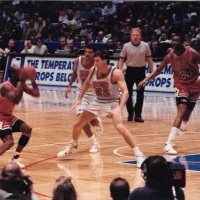
Basketball is a team sport played on a rectangular court...
The Union of Soviet Socialist Republics USSR existed from to...
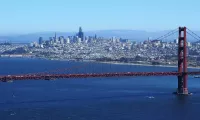
San Francisco is a major commercial financial and cultural hub...
Germany officially the Federal Republic of Germany is a Western...
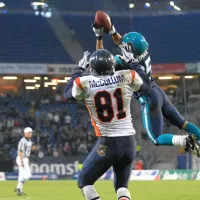
Football is a family of team sports primarily involving kicking...
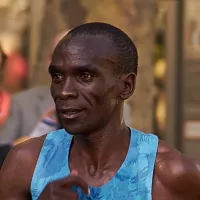
Eliud Kipchoge is a celebrated Kenyan long-distance runner renowned for...
Trending

2 months ago Travis Scott's Epic Johannesburg Performance: Fans Brave Weather for Unforgettable Show
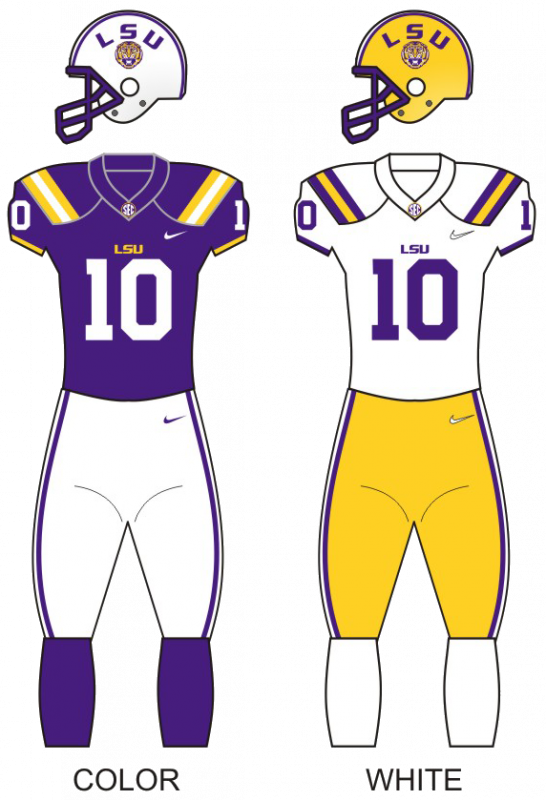
6 months ago Immanuel Iheanacho, a five-star OT, narrows down top schools, including LSU Tigers.
17 days ago Dylan Raiola Transfer Rumors Surface; Brother Decommits from Nebraska, Future Uncertain

24 days ago Bitwise Launches XRP ETF Amidst Market Activity; XRP Staking Explored.
2 months ago Kansas Jayhawks face UCF Knights: Sorsby's performance crucial in Big 12 matchup.
Jaylen Warren is a professional American football running back currently playing for the Pittsburgh Steelers in the NFL He had...
Popular

Candace Owens is an American conservative political commentator and author...

Ilhan Omar is an American politician currently serving as the...

XXXTentacion born Jahseh Dwayne Ricardo Onfroy was a controversial yet...
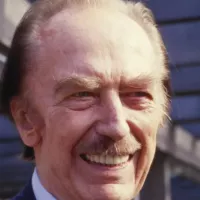
Frederick Christ Trump Sr - was an American real estate...

Oprah Winfrey an American talk show host television producer actress...

Tom Cotton is an American politician and Army veteran currently...
